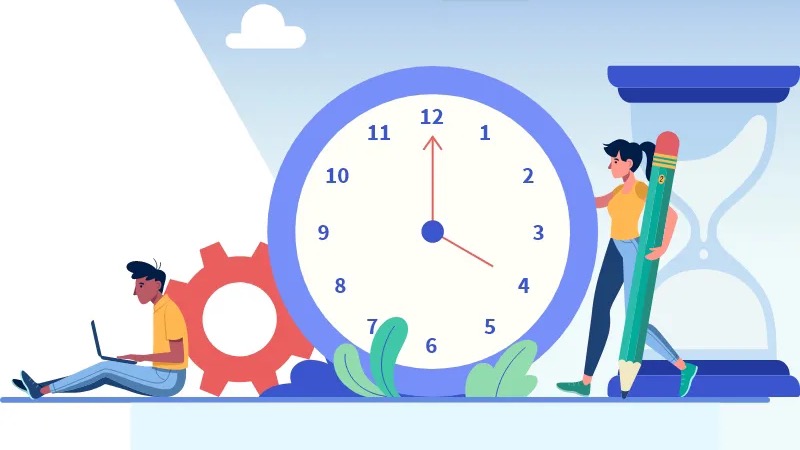Gmail Productivity Calculator
Analyze your Gmail usage patterns and calculate productivity metrics to optimize your email workflow with our Gmail Productivity Calculator.
Email Activity Data for Gmail Productivity Calculator
Gmail Productivity Calculator About the
Gmail Productivity Calculator The Gmail Productivity Calculator uses common email productivity metrics to help you understand your Gmail usage patterns and identify opportunities for optimization.
Gmail Productivity Calculator: Remember that email volume varies by role and industry. Our recommendations are general guidelines that should be adapted to your specific work context.
Maximizing Gmail Productivity: Strategies for Better Email Management
Gmail Productivity Calculator: Email is both essential for business communication and a potential productivity drain. Our calculator helps you understand your Gmail usage patterns as the first step toward more efficient email management.

Gmail Productivity Calculator visualization example
Key Gmail Productivity Metrics
Our Gmail Productivity Calculator measures email productivity through various metrics including response time, email-to-task ratio, time spent on email, and inbox management efficiency. Gmail Productivity Calculator The most telling metric is often the percentage of your workday consumed by email tasks.
The most telling metric is often the percentage of your workday consumed by email tasks. Industry research suggests that knowledge workers should aim to spend no more than 25% of their day managing email.
Gmail Productivity Calculator - Understanding Your Email Workload
The average professional receives 120+ emails per day and sends around 40. Our analysis shows how this imbalance often leads to a reactive rather than proactive approach to work. Gmail Productivity Calculator Your send-to-receive ratio as measured by our calculator offers insights into whether you're primarily consuming information or actively creating and responding to communications.
Gmail Productivity Calculator Using Gmail Productivity Calculator Your send-to-receive ratio as measured by our calculator offers insights into whether you're primarily consuming information or actively creating and responding to communications.

Time management strategies recommended by the Gmail Productivity Calculator
Strategies for Improving Gmail Productivity with optimization strategies
- Implement time blocking with Gmail Productivity Calculator: The Gmail Productivity Calculator helps you Set specific times for checking and responding to email rather than allowing it to interrupt your day continuously. The Gmail Productivity Calculator can help you determine optimal times.
- Use Gmail's built-in tools: Filters, labels, priority inbox, and templates can dramatically streamline email management. Our calculator can quantify these improvements. Optimize with our tools.
- Practice email triage: Sort emails by urgency and importance, handling quick responses immediately and scheduling time for more involved messages. The Gmail Productivity Calculator can help track efficiency gains.
- Adopt the 4D approach: For each email: Delete, Delegate, Defer, or Do. This prevents emails from lingering in your inbox. Our efficiency scores will reflect improvements in your email management. Track improvements with our calculator
Moving Beyond Email Overwhelm with Gmail Productivity Calculator
Gmail Productivity Calculator Email efficiency isn't just about processing messages faster—it's about creating systems that reduce email's overall impact on your workday. Our tool helps quantify this impact.
Use the Gmail Productivity Calculator regularly to track improvements in your email management strategy and reclaim valuable time for focused, high-value work. Try the Gmail Productivity Calculator today!
Frequently Asked Questions about Gmail Productivity Calculator about Gmail Productivity Calculator
How is the Gmail Productivity Calculator score calculated?
Gmail Productivity Calculator: Our score combines multiple factors: your send-to-receive ratio, response time efficiency, the percentage of your workday spent on email, and your daily email volume relative to industry averages. The resulting score is calibrated on a scale from 0-100, with higher scores indicating more efficient email management.
What's an ideal amount of time to spend on email? with optimization strategies
The Gmail Productivity Calculator helps you The Gmail Productivity Calculator suggests that most knowledge workers should aim to spend no more than 1-2 hours per day (or 10-25% of their working hours) on email-related tasks. However, this varies by role—customer service roles might require 40-50% of time on email, while creative or technical roles might target under 15%.
How can the Gmail Productivity Calculator help reduce my email response time? with optimization strategies
We recommend implementing scheduled email checking (2-3 times daily rather than continuously), using templates for common responses, adopting email triage practices to handle simple emails immediately, and using Gmail's priority inbox to focus on important messages first.
Does sending fewer emails always improve productivity?
Not necessarily. Our Gmail Productivity Calculator emphasizes that the goal isn't minimizing email but optimizing communication efficiency. Sometimes sending a clarifying email can prevent hours of misunderstanding. Focus on sending concise, clear emails that reduce the need for follow-up messages rather than simply reducing volume. This is where our tool becomes invaluable for measuring your email efficiency.
How often should I use the calculator to evaluate my email productivity?
Monthly assessments are generally sufficient to track trends while allowing enough time for new habits to demonstrate results. After implementing significant workflow changes, you might want to check more frequently (weekly) to gauge immediate impact. The Gmail Productivity Calculator helps you is designed to help you achieve this goal.
